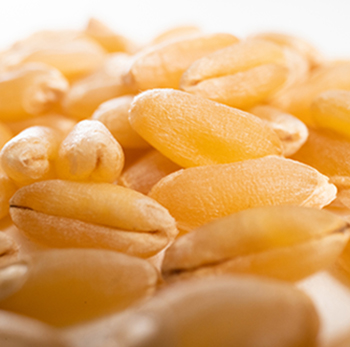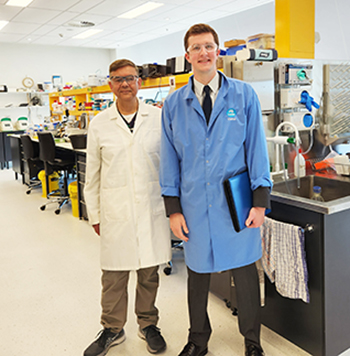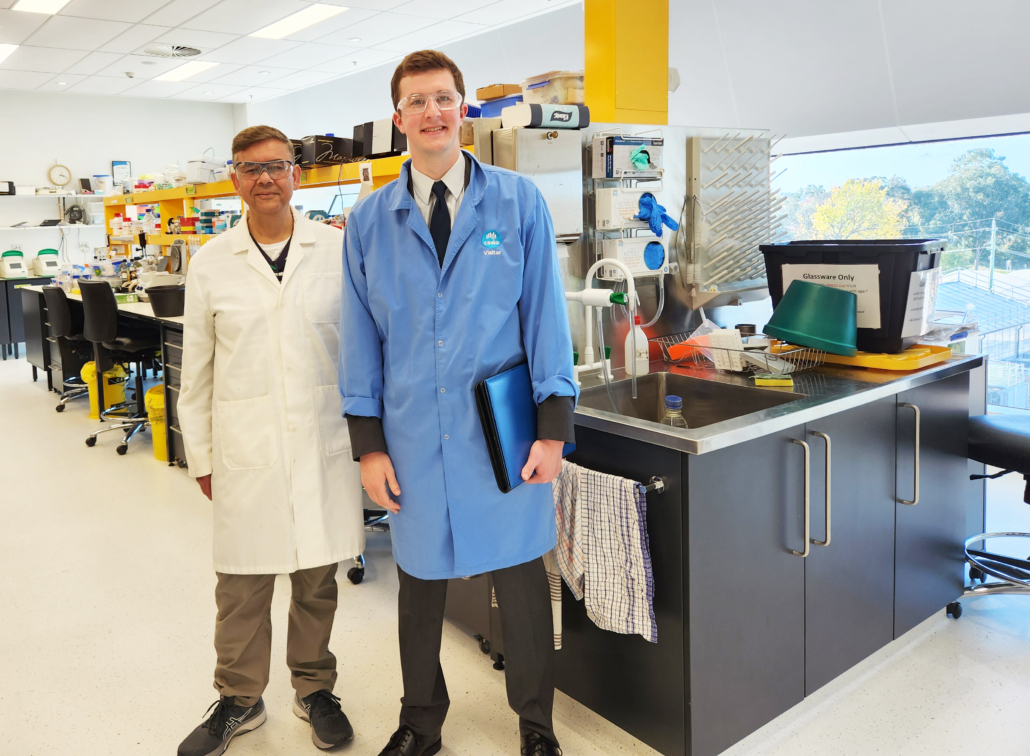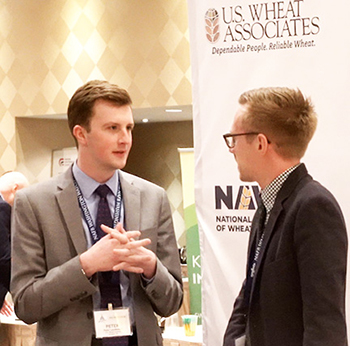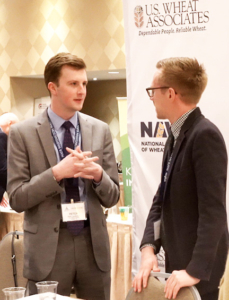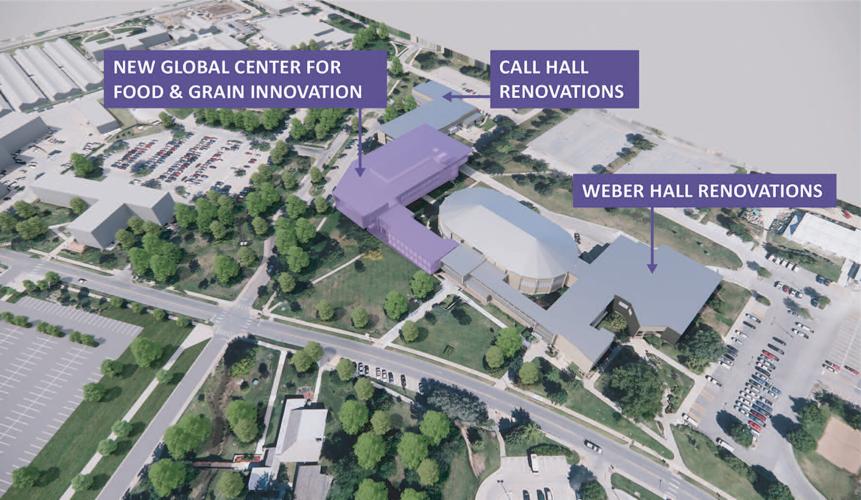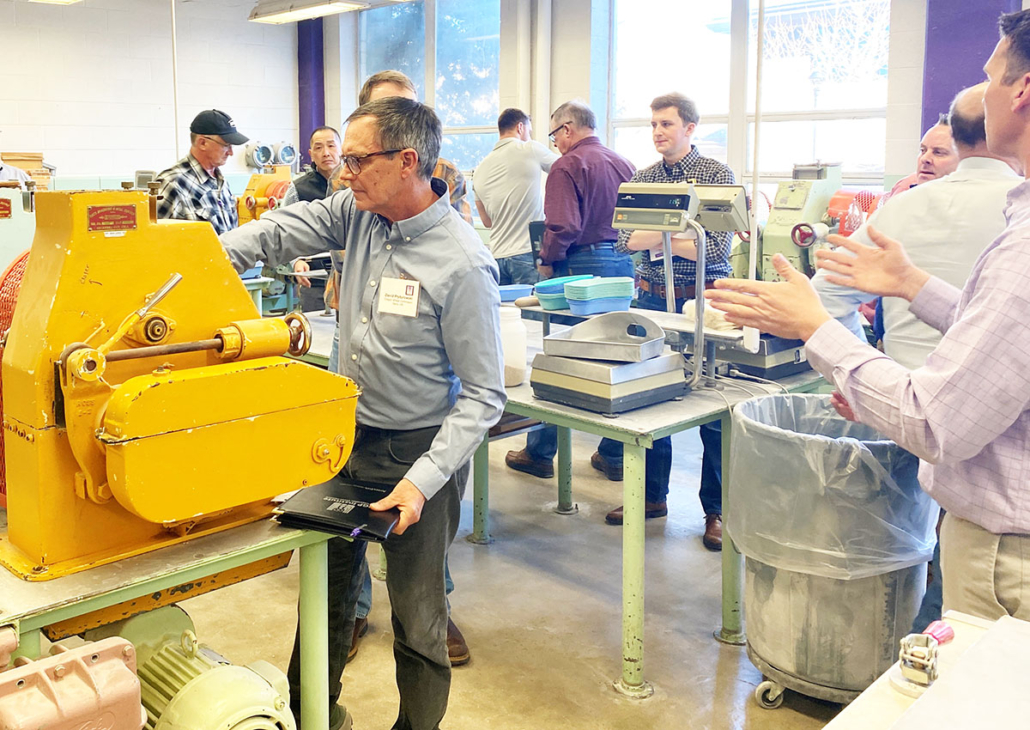Building a kernel photo library with new and updated images from each of the six classes of U.S. wheat requires the single steady hand of a skilled photographer.
And hundreds of hands of support from everyone else.
The wheat kernel photo library project, which U.S. Wheat Associates (USW) began planning earlier this year, took a major leap forward in June, when the Department of Plant Sciences at North Dakota State University hosted a photo crew from Middle, USW’s creative agency in Manhattan, Kansas. Over two days, a Middle photographer captured images of a dozen different varieties of U.S. wheat – the six classes and several subclasses – from fields across the country.
Therein lies the referenced “hundreds of hands of support” – wheat kernels photographed for the USW project were sent to the NDSU campus in boxes and buckets from Idaho, Kansas, Maryland, Ohio, Oregon, Texas and, of course, North Dakota.
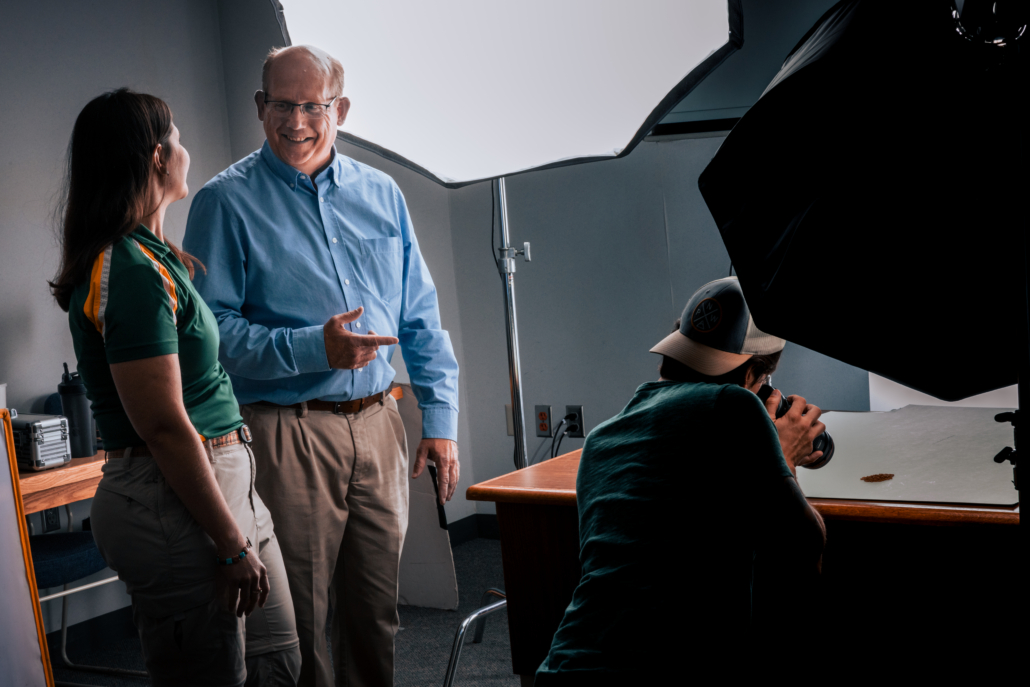
Clair Keene, an Assistant Professor and Agronomist at North Dakota State University, and North Dakota Wheat Commission Policy and Marketing Director Jim Peterson watch as a photographer captures images as part of the photography project. NDSU hosted the photo shoot to build the new library of wheat kernel images.
Photos in the wheat kernel photo library project include magnified up-close shots of individual kernels, as well as cross-cut shots that show an internal view of the kernel. There are photos of small piles of the grains that depict uniformity and color.
The library is still “under construction,” but once it is complete, photos will be used across USW departments for a variety of projects. Having access to clear and accurate kernel images allows USW to educate and inform both internal and external audiences, explained USW Vice President of Programs Erica Oakley.
“There are many important uses for these images – everything from our Crop Quality programs to presentations our staff and partners give around the world to buyers and potential buyers of U.S. wheat,” explained Oakley. “We really appreciate the people at North Dakota State University for hosting this project, and we must thank producers and state wheat associations for sharing samples of their wheat to photograph. It’s a worthwhile project that will benefit us all.”

